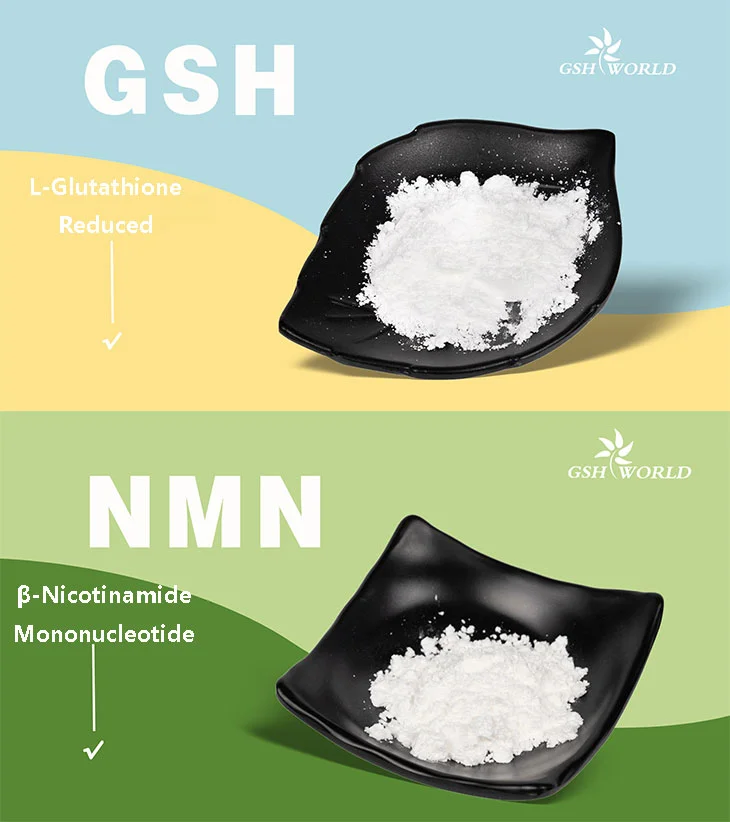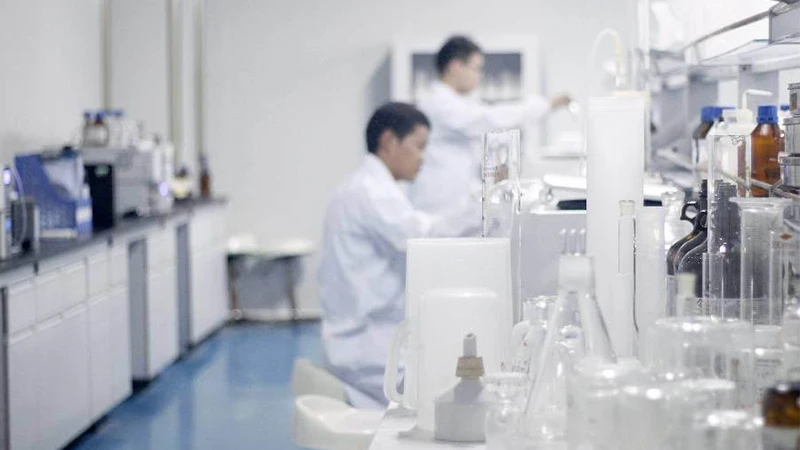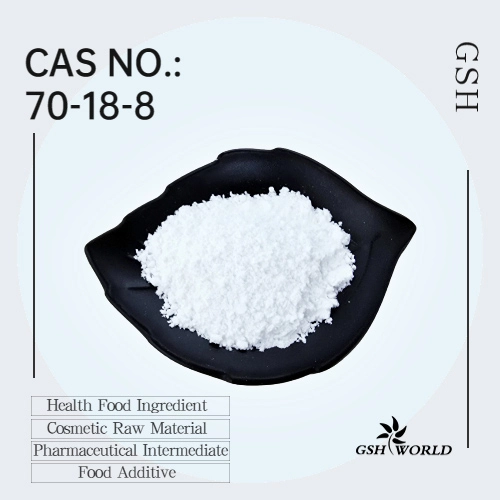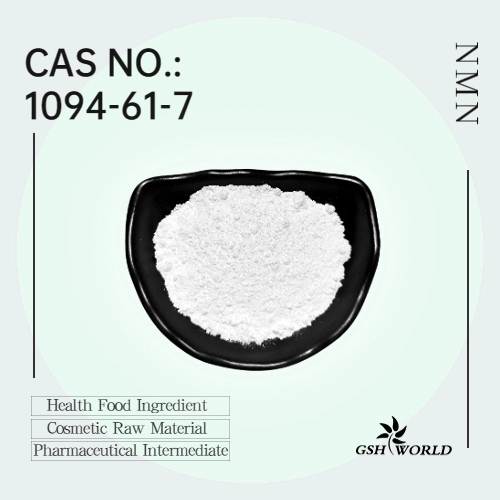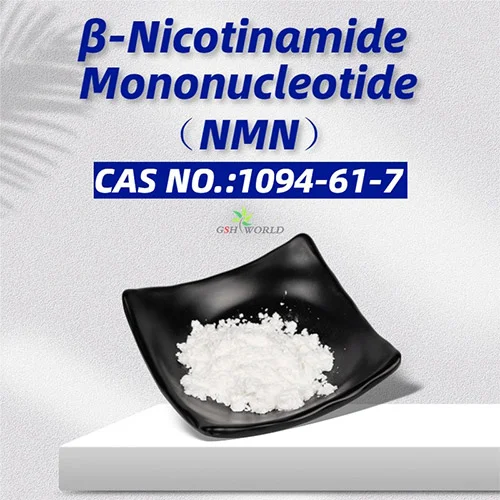What is the anti-aging mechanism of NMN?
The aging process is affected by multiple biological markers, including genomic instability, telomere shortening, epigenetic changes, etc. The aging population leads to an increase in age-related diseases such as hypertension, atherosclerosis, diabetes, etc.
Nicotinamide adenine dinucleotide (NAD+) plays an important role in aging and life extension. NAD+ levels decline with age, affecting tissue function and associated with a variety of age-related diseases.
NMN is a precursor of NAD+ and has shown anti-aging properties. In model organisms, NMN intake has been shown to improve age-related diseases and may extend lifespan.
1. How is NMN absorbed?
Studies have shown that NMN is transported into cells via the SLC12A8 transporter, which plays a vital role in regulating energy metabolism and skeletal muscle function, suggesting its importance in the development of sarcopenia and frailty in workers during the aging process.
NMN can be completely absorbed into the blood in the intestines. 15 minutes after oral administration, all NMN will be absorbed by tissues and immediately stored in the form of NAD+ in various tissues such as liver, skeletal muscle and cortex.
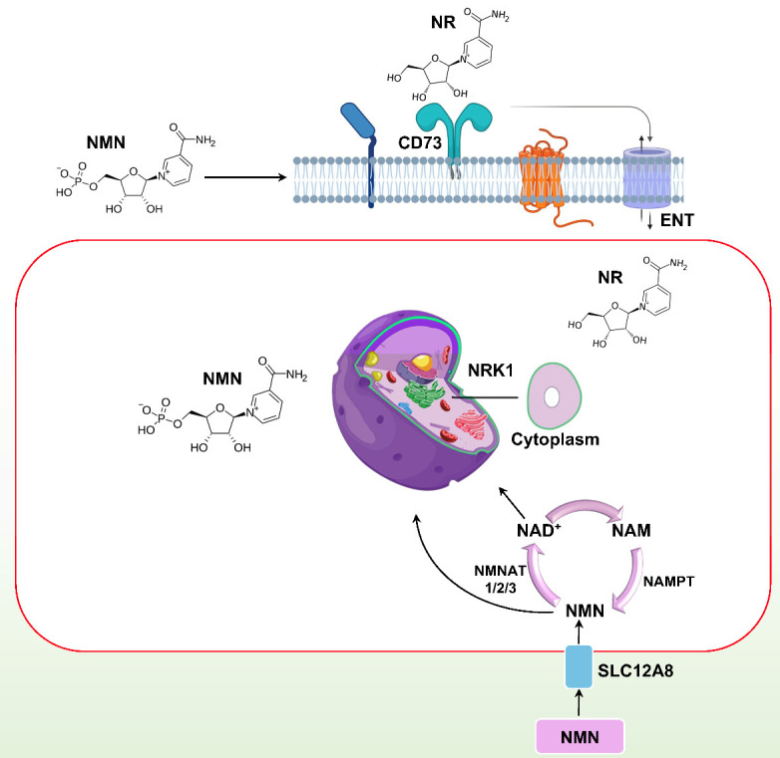
Figure: Graphical representation of NMN absorption in cells
2. Anti-aging mechanism of NMN
Aging can lead to biological changes such as cognitive decline, sirtuin gene suppression and DNA damage, which studies have shown can be prevented by increasing NAD+ levels in the body. Lower energy intake, fasting, calorie restriction and exercise can also increase NAD+ levels in the body, while high-fat diet and aging can lead to decreased NAD+ levels. Studies have shown that NMN can induce Sirt1 activity, which may extend lifespan by using mitochondrial excitation. NMN can improve age-related pathologies in the body by enhancing NAD+ metabolism.
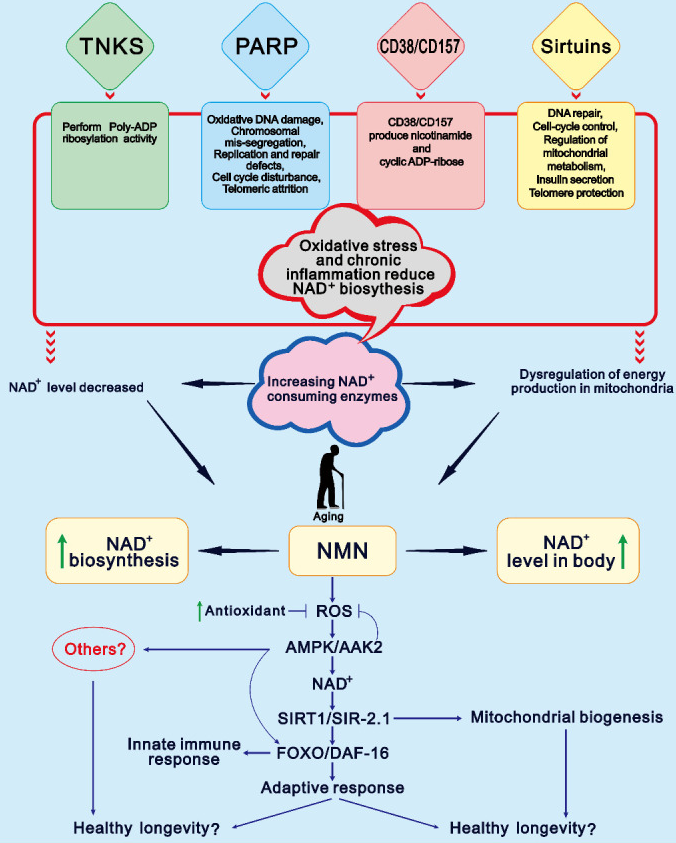
Figure: Hypothetical model of NMN-mediated longevity and the main reason why NAD+ levels decrease with age.
In addition, NMN may activate deacetylases (such as Sirtuins) by increasing NAD+ levels, thereby affecting mitochondrial health, DNA repair, autophagy, etc.
NMN has been studied for nearly six decades. About a decade ago, NMN gained fame as an anti-aging agent, with studies showing potential benefits for improving metabolic markers, weight management, cognitive function, and reproductive health.
In recent years, NMN has generally been considered safe at low doses, while high doses may have adverse effects, which requires further research to determine the appropriate dose.
Regardless, NMN has the potential to be an anti-aging intervention in humans as a molecule that enhances NAD+ metabolism and alleviates age-related pathologies.
Content and images are from references:
[1] Rahman SU, Qadeer A, Wu Z. Role and Potential Mechanisms of Nicotinamide Mononucleotide in Aging. Aging Dis. 2024 Apr 1;15(2):565-583. doi: 10.14336/AD.2023.0519-1. PMID: 37548938; PMCID: PMC10917541.
*Special note - This article is for informational purposes only and cannot replace a doctor's treatment diagnosis and advice. It should not be regarded as a recommendation or proof of efficacy of the medical products involved. If it involves disease diagnosis, treatment, and rehabilitation, please be sure to go to a professional medical institution to seek professional advice.
PREVIOUS: Adenosylmethionine powder Q&A
by GSHWORLD
GSHWORLD is China Biological API Manufacturer. China NMN Supplements powder suppliers & best NMN benefits raw material Factory.


